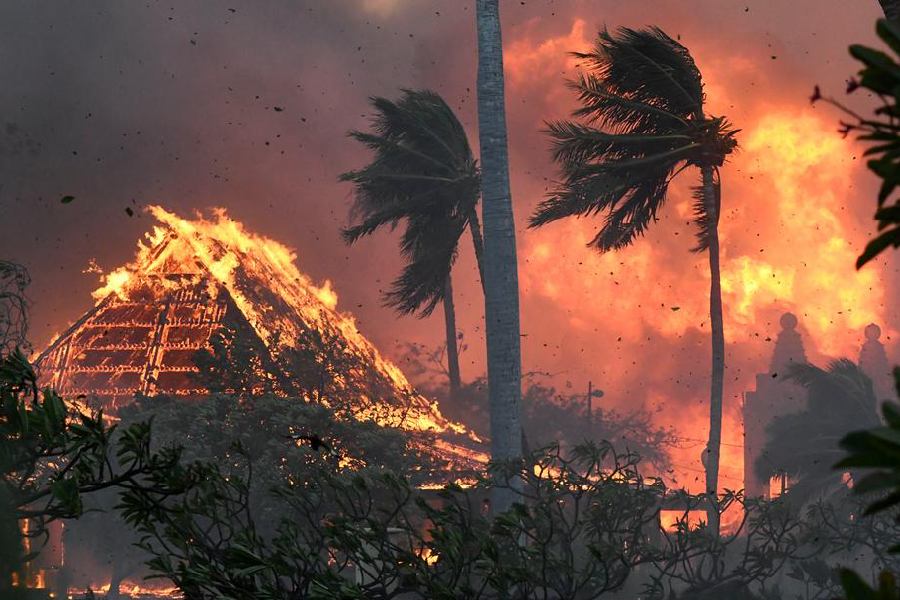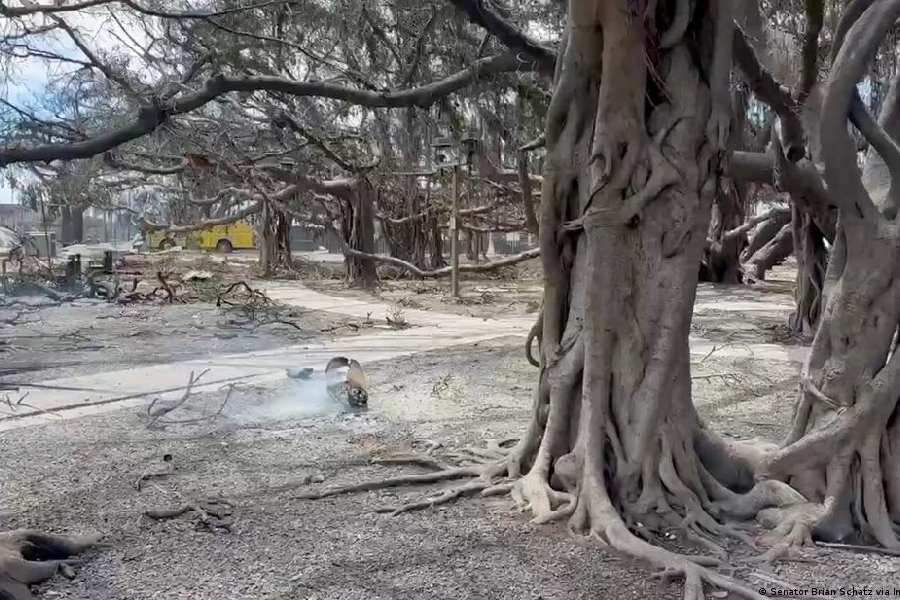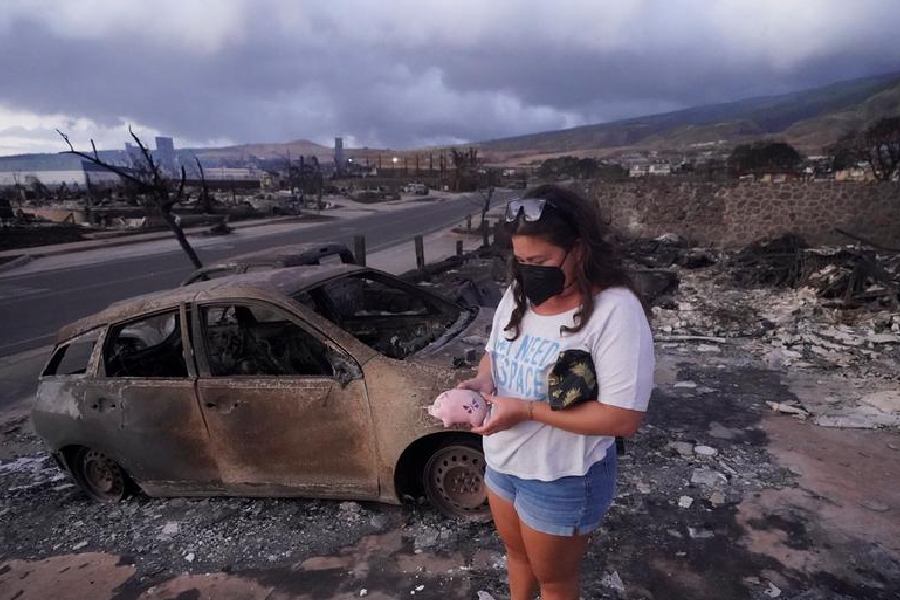One of the worst natural disasters in Hawaii's history has killed at least 67 people and wiped out the historic town of Lahaina. Four factors came together to spark the devastating wildfires.
1. A small fire that burned out of control
It all began with a small forest fire, though it's not yet clear what started that fire and whether it could be linked to arson.
In any case, firefighters could not extinguish the blaze and on Wednesday night the flames began to spread very quickly. Fanned by extremely strong winds, the fire was soon out of control, a similar situation to the recent wildfires on the Greek island of Rhodes. In both cases, the fire spread so fast that many people panicked and jumped into the sea to escape the flames.
2. Very strong trade winds
Hurricane Dora, a category four storm that recently passed Hawaii far to the southwest, is thought by some meteorologists to have caused the strong winds of up to 100 kilometers per hour (62 miles per hour) that fueled the wildfires.
According to some analysts, the hurricane caused major differences in air pressure leading to unusually strong trade winds. Others, however, have doubted a direct connection between the hurricane and the winds.

The hall of historic Waiola Church in Lahaina and nearby Lahaina Hongwanji Mission were engulfed in flames Deutsche Welle
What is certain is that the strong winds fueled the fires. "The West Maui mountains, in turn, accelerated those winds further, and especially at night," said Steven Businger, a professor in the Department of Atmospheric Sciences at the University of Hawaii.
"That's what caught people off guard, that this firestorm occurred when people were sleeping or taken unawares," he told DW. "So, it was a perfect storm."
Gentle trade winds are normal for the region. They are created when air moves from the high-pressure system north of Hawaii, known as the North Pacific High, to the low-pressure area around the equator to the south of the state. The fact that there were such strong trade winds surprised meteorologists at the National Weather Service in Honolulu.
3. A dry season with low humidity
Hawaii is currently experiencing a dry season with very low humidity, making it easier for the fires to spread. The Pacific island archipelago usually has a tropical climate, with warm and humid weather and few temperature fluctuations. Extreme heat and high humidity are prevented by the normally gentle trade winds.
The dry season begins in May, if not earlier. Rain virtually stops in June and July and temperatures rise, making it the most popular time for visitors. August and September can be particularly hot, with average daytime highs of over 30 degrees Celsius (86 degrees Fahrenheit). Although tropical showers areِ possible during the dry season, hurricanes are rare.

The wildfire destroyed everything in its path, leaving behind scorched ruins Deutsche Welle
Meteorologists, forest experts and firefighters sound the alarm when the state experiences a dangerous combination of dry vegetation, strong winds and very dry air. The US National Weather Service had issued warnings prior to the disaster.
4. Dry vegetation created a 'tinderbox'
Forest fires are generally caused by lightning, prolonged periods of heat or human activity, either intentional or through carelessness. Wildfires can be sparked by a discarded cigarette just as easily as an untended campfire.
The situation on Maui was exacerbated by Guinea grass, invasive vegetation that can grow as quickly as 15 centimeters (10 inches) per day during the wet season and reach up to 3 meters (10 feet) in height. If left to dry out, it can create a "tinderbox," Clay Trauernicht, a fire scientist at the University of Hawaii told The Associated Press.
"These grasslands accumulate fuels very rapidly," he said. "In hotter conditions and drier conditions, with variable rainfall, it's only going to exacerbate the problem."
Better fire management is necessary
Devastating wildfires have always existed, but climate change is causing them to become more frequent. Experts have said better fire management is becoming increasingly important.
"Fires know no bounds," said Johann Georg Goldammer, the head of the Global Fire Monitoring Center, based in Freiburg, Germany. "They burn across forests, nature reserves, grasslands, agricultural land, farms, rural areas and even the outskirts of urban areas.
"That is why measures are needed to make these areas less susceptible to fire. They need to be developed in such a way that a fire will find less fuel and thus be easier to control," he told DW.
Robert Watson, the former head of the Intergovernmental Panel on Climate Change, said countries with large forests had to anticipate fires and put strategies in place to keep them under control.
"They're going to have to do forest thinning, that is, to thin the undergrowth," he told DW. "They can do that with controlled fires. You need the two together.
Watson said the combination of both approaches would make wildfires easier to manage, by reducing the "fuel load," the total amount of dry vegetation available to burn.
"With human-induced climate change, we're going to see more extreme temperatures, we're going to see more droughts, the perfect conditions for forest fires like this," he warned.











